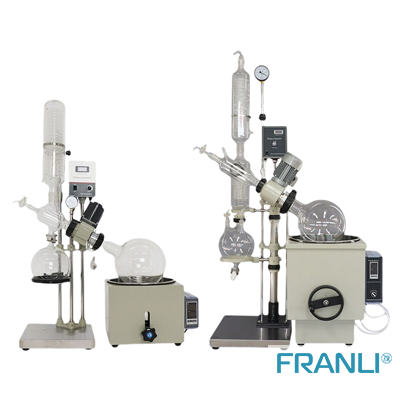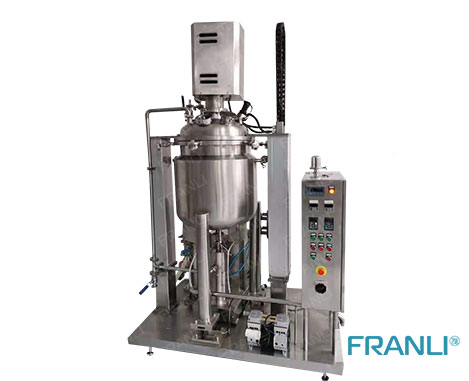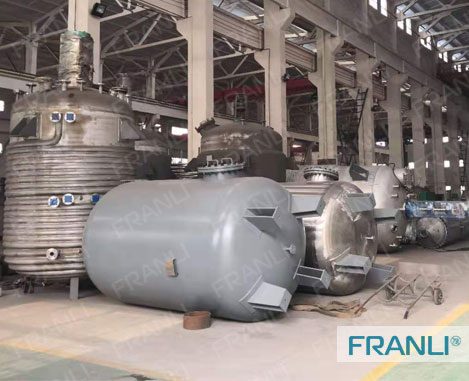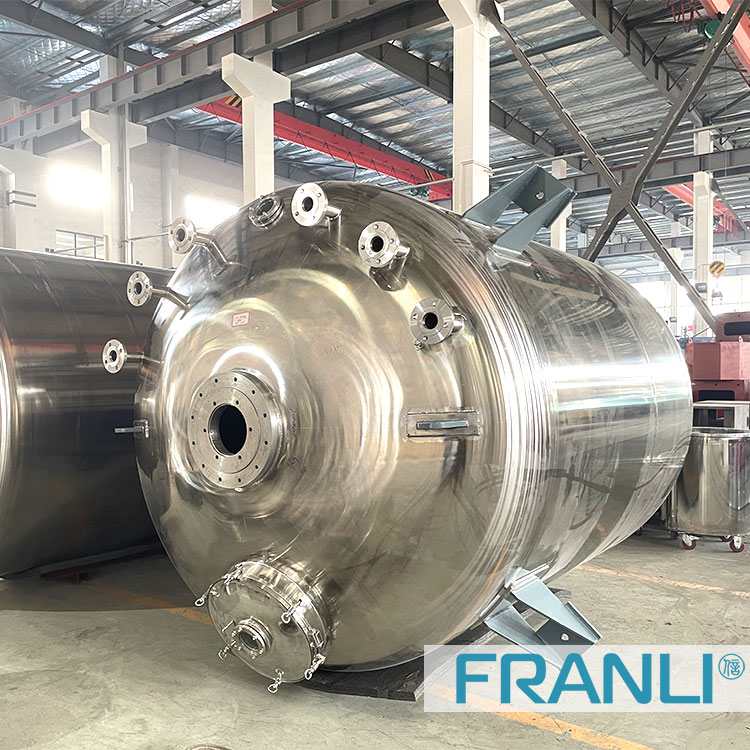Chemical Reactor
The mixer is one of the key components of the chemical reactor. Choosing the corresponding mixer according to the physical properties, capacity, and mixing purpose of the different media in the kettle can play a great role in promoting the chemical reactor speed and improving production efficiency. Mastering the classification of mixers and applicable occasions helps to choose the right mixer to achieve better response effects.
Advantages of chemical reactor:
- High quality
- Easy to use
- Provide customized services according to customer material characteristics
Application

Coating

Cosmetic

Battery

Graphite

Agrochemistry

Adhesives
Hot sale chemical reactor
Guidelines For Chemical Reactor
Application of chemical reactor
The chemical reactor is a pressure vessel widely used in petroleum, chemical industry, rubber, pesticides, dyes, medicine, and food to complete the process of vulcanization, nitrification, hydrogenation, alkylation, polymerization, and condensation.
Composition of chemical reactor
The chemical reactor is composed of a kettle body, a kettle cover, a jacket, a mixer, a transmission device, a shaft sealing device, and support.
- The shell of thechemical reactor
The shell is composed of a circular cylinder, an upper cover, and a lower head. There are two ways to connect the upper cover and the cylinder. One is that the cover and the cylinder are directly welded to form a whole; the other is to consider the convenience of disassembly and can be connected with a flange. The upper cover has manholes, hand holes, and process takeovers, etc.
- Stirring device forchemical reactor
In the chemical reactor, in order to speed up the reaction speed, strengthen the mixing, and enhance the mass transfer or heat transfer effect, the chemical reactor is generally equipped with a stirring device. It is composed of a mixer and a stirring shaft, which are connected with a transmission device by a coupling.
- Sealing device of thechemical reactor
The sealing device used in the chemical reactor is a dynamic sealing structure, and there are mainly two types of packing seal and mechanical seal.
The chemical reactor makes the materials uniformly mixed and strengthens heat and mass transfer, including homogeneous liquid mixing; liquid-liquid dispersion; gas-liquid dispersion; solid-liquid dispersion; crystallization; solid dissolution; enhanced heat transfer, etc. The mixer is the main component to realize the mixing operation, and its main component is the impeller, which applies mechanical energy to the liquid with the movement of the rotating shaft and promotes the movement of the liquid.
When the chemical reactor rotates, the mechanical energy is transferred to the fluid, forming a highly turbulent fully mixing zone near the mixer, and generating a high-speed jet to drive the liquid to circulate in the stirring vessel.
The way that the liquid circulates within the equipment is called the “flow model” of the liquid, or “flow pattern” for short. The flow pattern is closely related to the mixing effect and mixing power. The flow pattern depends on the form of the mixer, the geometric characteristics of the mixing container and internal components, as well as the nature of the fluid, the speed of the mixer, and other factors.
Axial flow
The flow direction of the fluid is parallel to the stirring shaft, and the fluid is pushed by the blades to make the fluid flow downwards, and then turn upwards when encountering the bottom surface of the container, forming an up and down circulation flow.
Radial flow
The fluid flow direction is perpendicular to the stirring shaft and flows in the radial direction. When it encounters the wall of the container, it is divided into two fluids to flow upwards and downwards respectively, and then return to the tip of the blade without passing through the blades, forming two circular flows of upper and lower.
Tangential flow
In a container without a baffle, the fluid rotates around the axis. When the flow rate is high, the liquid surface will form a vortex. The flow of the fluid from the circumferential direction around the blade to the blade area is small, and the mixing effect is very poor.
l The above three flow patterns usually exist at the same time;
l Axial flow and radial flow play a major role in mixing;
l The tangential flow should be suppressed-the use of baffles can weaken the tangential flow and enhance the axial flow and radial flow.
- Paddle mixer
It is composed of blades, keys, collars, and vertical shafts. The blades are generally made of flat steel or stainless steel or non-ferrous metals. The speed of the paddle mixer is relatively low, generally 20~80r/min. The diameter of the paddle mixer is Di/3~2/3 of the inner diameter of the chemical reactor. The blades should not be too long. When the diameter of the chemical reactor is large, use two or more blades.
Main application: Paddle mixer is suitable for liquid materials with high fluidity and low viscosity, as well as for fibrous and crystalline dissolving liquids. When the material layer is deep, several rows of paddles can be installed on the shaft. The folding blade type has less power consumption and lower operating cost than the straight blade type, so the folding blade propeller is used more.
Paddle mixers cannot be used in gas-liquid dispersion operations for the purpose of maintaining gas and for miniaturization.
- Propeller mixer
The propeller mixer can make the materials circulate in the chemical reactor during mixing. The main function is volume circulation, the shearing effect is small, and the up and down tumbling effect is good. When a larger flow rate is required, a flow deflector is provided in the chemical reactor.
The standard propeller mixer has three blades whose pitch is equal to the diameter d of the paddle. The diameter of the propeller mixer is about 1/4 to 1/3 of the inner diameter Di of the chemical reactor, 300~600r/min. The material of the mixer is usually cast iron and cast steel.
The characteristics of the propeller mixer:
l Axial flow mixer;
l The large circulation and low mixing power;
l Simple structure and convenient manufacturing;
l It is often used in low-viscosity fluids.
- Turbine mixer
The turbine mixer has a relatively high speed, 300-600r/min. Straight blade and curved blade turbine mixers mainly produce radial flow, and folding blade turbine mixers mainly produce axial flow.
The main advantage of the turbo mixer is that when the energy consumption is not large, the mixing efficiency is high, and the mixing produces a strong radial flow. Therefore, it is suitable for emulsions, suspensions, etc.
- Anchor mixer
It is suitable for mixing fluids with a viscosity below 100Pa·s. When the fluid viscosity is 10-100Pa·s, a horizontal paddle can be added in the middle of the anchor paddle, which is a frame mixer, to increase the mixing in the middle of the container.
Features of anchor mixer:
l Simple structure and convenient manufacturing;
l Suitable for materials with high viscosity and large processing capacity;
l Easy to get a large surface heat transfer coefficient;
l It can reduce the occurrence of “hanging on the wall”.
Related production lines
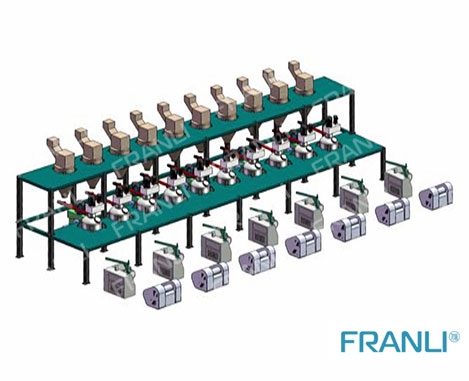
Offset Ink machine line
FRANLI is specialized in offset ink full line production for 20+ years. Helped customer save the cost, save the man power, also save the space.

Offset Ink machine line
FRANLI is specialized in offset ink full line production for 20+ years. Helped customer save the cost, save the man power, also save the space.

Offset Ink machine line
FRANLI is specialized in offset ink full line production for 20+ years. Helped customer save the cost, save the man power, also save the space.

Offset Ink machine line
FRANLI is specialized in offset ink full line production for 20+ years. Helped customer save the cost, save the man power, also save the space.
